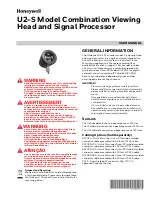SYNCHRONOUS SERIAL INTERFACE (SSI)
6 - 158
PORT C
MOTOROLA
TDM networks are useful to reduce the wiring needed for connecting multiple processors.
A TDM parallel topology, such as the one shown in Figure 6-92, is useful for interpolating
filters. Serial data can be received simultaneously by all DSPs, processing can occur in
parallel, and the results are then multiplexed to a single serial data out line. This configu-
ration can be cascaded and/or looped back on itself as needed to fit a particular applica-
tion (see Figure 6-93). The serial and parallel configurations can be combined to form the
array processor shown in Figure 6-94. A nearest neighbor array, which is applicable to
matrix relaxation processing, is shown in Figure 6-95. To simplify the drawing, only the
center DSP is connected in this illustration. In use, all DSPs would have four three-state
buffers connected to their STD pin. The flags (SC0 and SC1) on the control master oper-
ate the three-state buffers, which control the direction that data is transferred in the matrix
(north, south, east, or west).
The bus architecture shown in Figure 6-96 allows data to be transferred between any two
DSPs. However, the bus must be arbitrated by hardware or a software protocol to prevent
collisions. The master/slave configuration shown in Figure 6-97 also allows data to be
transferred between any two DSPs but simplifies network control.
F
re
e
sc
a
le
S
e
m
ic
o
n
d
u
c
to
r,
I
Freescale Semiconductor, Inc.
For More Information On This Product,
Go to: www.freescale.com
n
c
.
..


















